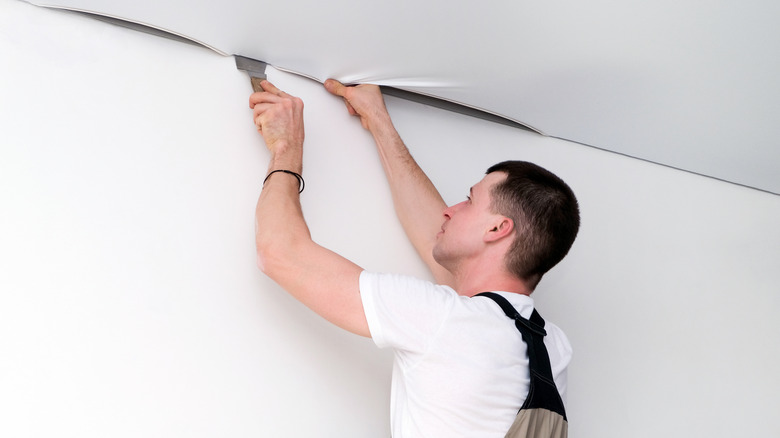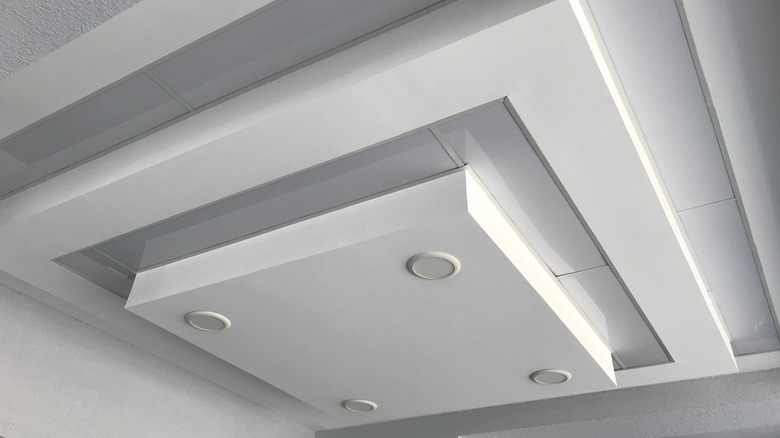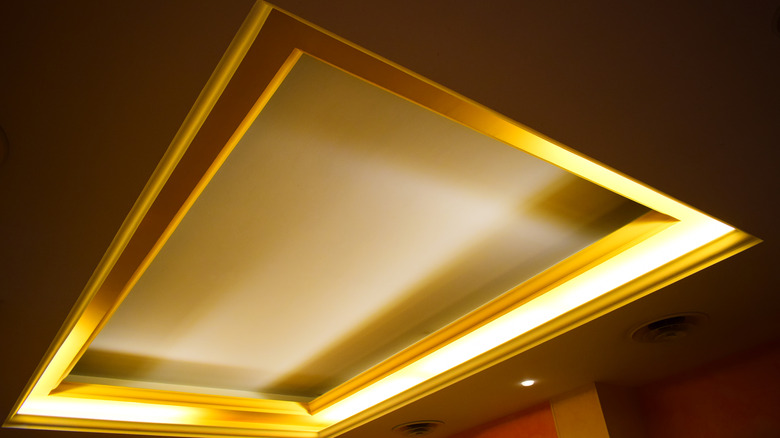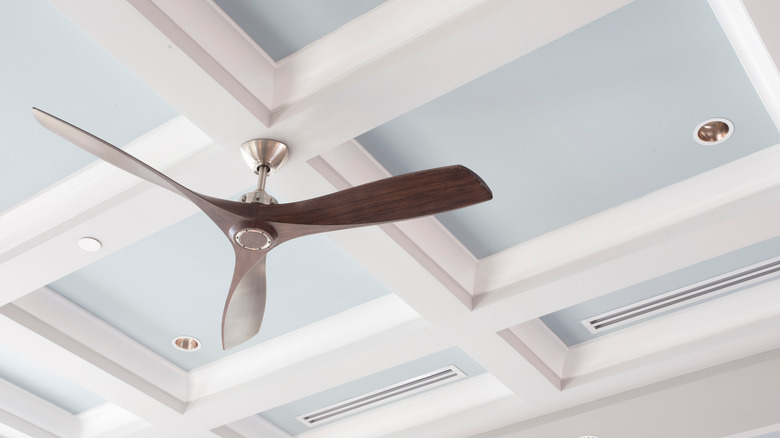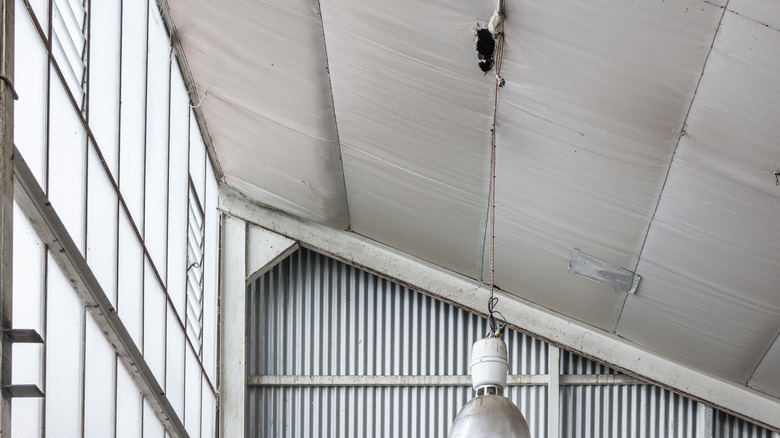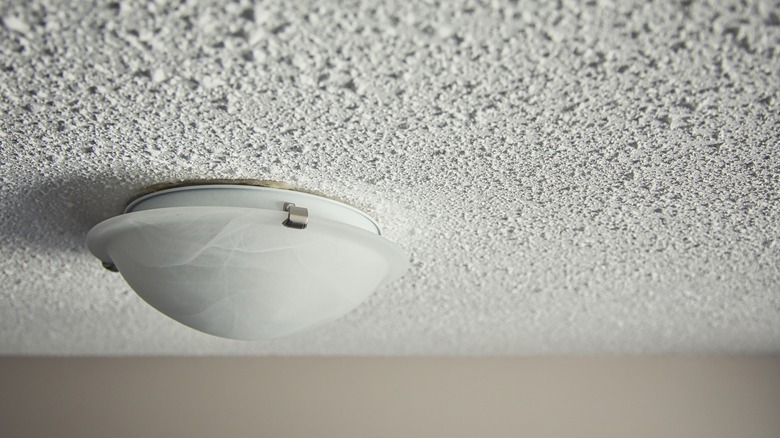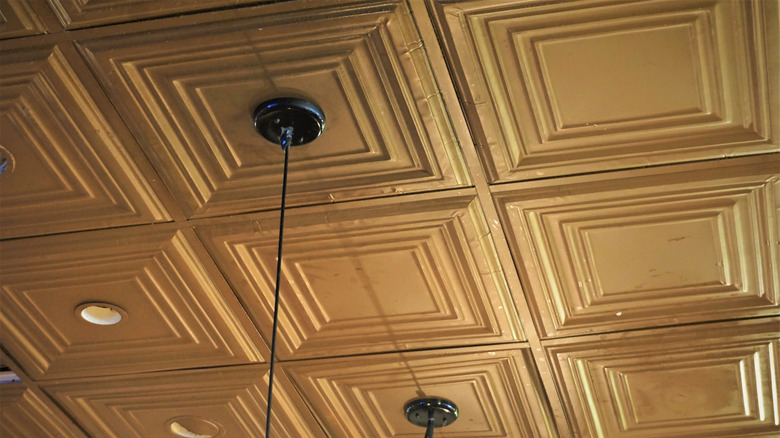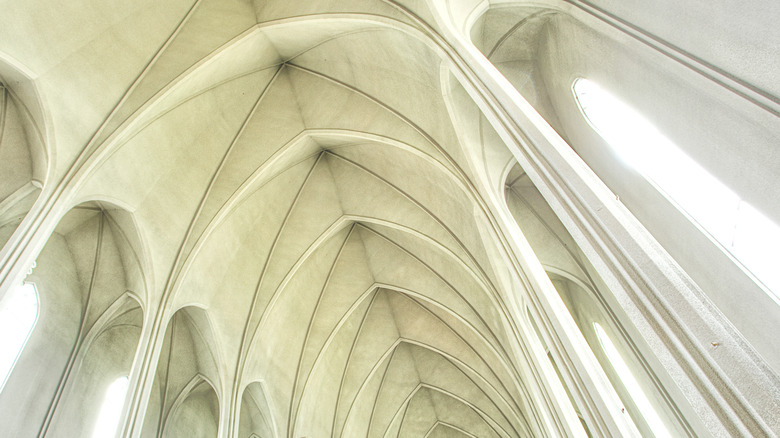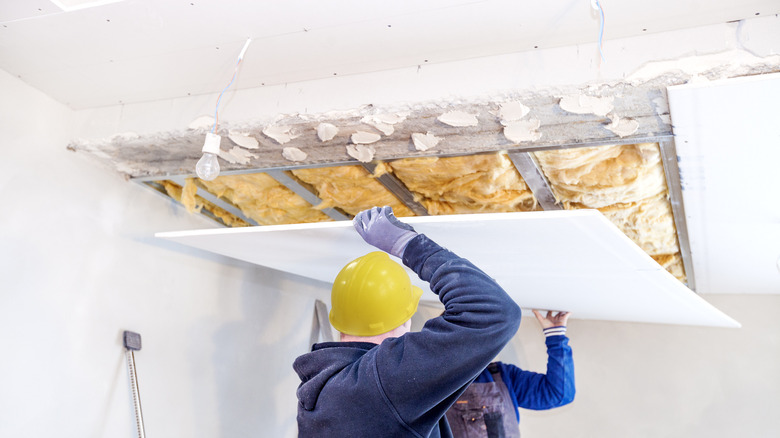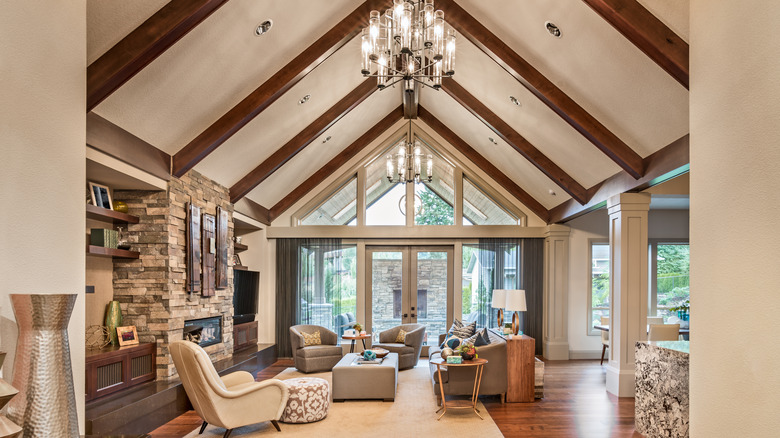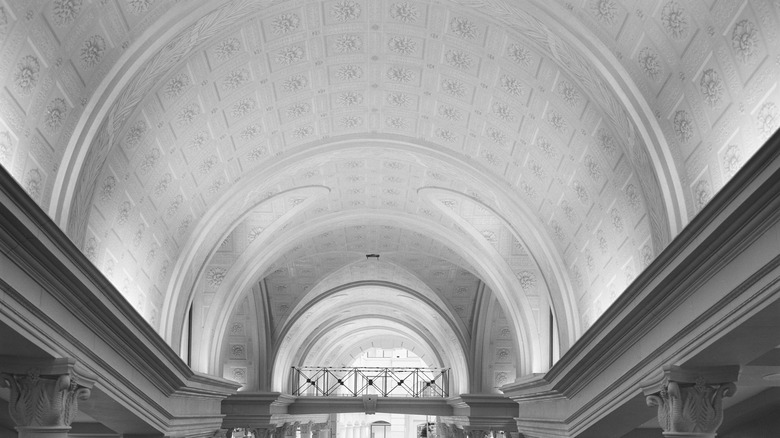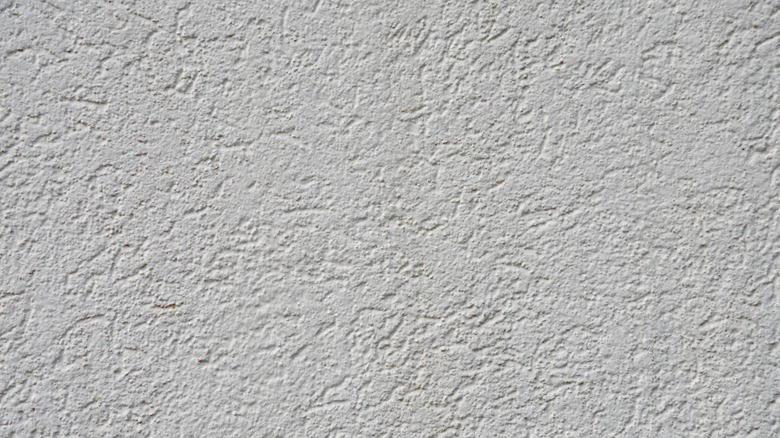What Are The Different Types Of Ceiling Finishes?
Gone are the days when ceilings were only a necessity — they still are but are now referred to as the fifth wall, via Inhabit. This implies that beyond the expanse of the brick and mortar above your head, or the good ol' oakwood in a large triangle shape, there's more. And architects, home constructors, and décor enthusiasts of varying levels of expertise and skillset are ready to meet your shelter needs. Like them, as a homeowner, you have a variety of styles to choose from.
While we're on the topic of options, you could check out our tips and tricks for painting to update your current ceiling or the proposed new one you intend to install. Also, it is crucial to know and understand construction lingo beforehand if you're trying to build your home, renovate or buy a new house. To help you with this, we have created an A-list collection of ceiling types to choose from.
Dropped ceiling
The first ceiling on our curated list is the dropped ceiling, which ironically functions as a secondary ceiling. Elegant Ceiling & Walls writes that the dropped ceiling is that which sinks or sits just below the major, first, or structural ceiling and gives an aesthetically pleasing effect to the fifth wall.
Beyond aesthetics, this variety is used to hide discrepancies like wiring, pipes, or damage for a brilliant finish, via Metal Ceiling Express. Dropped ceilings could be used for residential and commercial buildings and often serve as a focal point in living spaces.
Coved ceiling
A coved ceiling implies one in which the ceiling meets with the wall in the bend where it ends. If you ever come across a ceiling that seems to eliminate the 90-degree sharp edges and forms a gracious curve instead, then bingo, you've got one, says Archways and Ceilings.
This option also comes in a plethora of variations for you to choose from. According to Did You Know Homes, the significant benefits of this type of ceiling are that it eliminates the cost of crown molding and updates the layout of a space, and offers an elegant aesthetic.
Coffered ceiling
True to its name, the coffered ceiling is an indented one, solely and deliberately done for aesthetic effects. But not to confuse it with the dropped ceiling, Homes to Love says that its principal characteristic is the single recessed panel which is often separated in a square, rectangle, or octagon shape.
This ceiling variety is not new, as it dates back to ancient Rome, says the experts over at Armstrong Ceiling. Another significant characteristic of the coffered ceiling is that it makes your home appear larger than it is, which, in our opinion, is excellent for small homes.
Shed ceiling
Have you ever walked into a home that felt like you've climbed into your granny's attic? If you can't relate, imagine a ceiling that slopes or angles up such that it rises only on one side. According to the experts at Did You Know Homes, this is common in residences with attics or vaulted roofs and works out almost all the time.
The primary problem with this is that tall people might not be able to stand up straight in one part of the house; that's just awkward. Nevertheless, the insulation that it provides is next to perfection.
Popcorn ceiling
Who said ceilings had to be dry and dull? Also known as the acoustic ceiling and the Stipple ceiling, via Multi-Trade Building Services, the popcorn ceiling gets its name from resembling the kernels of corn that just popped.
This textured ceiling is made by layering sponge and styrofoam with spray paint to achieve a thicker and more dramatic look. In the past, claims Construction Inspection Tips, the materials used for popcorn ceilings were linked to a leading cause of cancer. However, the new materials employed do not pose such a risk and tend to help save time and money.
Tin ceiling
Ever come across study ceilings that are made primarily of steel? Back in the 1880s, when house fires were common because home fires from kitchen or furnaces went awry, people had to do something, so they came up with steel furnaces.
According to Tin Ceiling, tin ceilings are made of 30-gauge plated steel and other materials such as field panels and fillers. The regal aura tends to give off dynasty vibes; even better, it's highly affordable. According to the experts at the CostOwl, a square foot tin ceiling costs $3 to $10 per panel.
Cathedral ceiling
If you're a fan of Dan Brown, the closest you'll ever see those magnificent descriptions of the Cathedrals in Paris or those in Rome are the Cathedral ceiling. Elle Decor writes that these ceilings usually depend on the shape of the roof.
In any case, a cathedral ceiling would cost anything between $16,000 to $25,000, via Fixr. The experts at David Darling claim that the primary disadvantage of this kind of ceiling is that it is prone to moisture damage, but either way, it's an excellent and dramatic option.
Drywall ceiling
Drywall ceilings are the most popular kind of shelter for apartments, prefab homes, etc., because they're by far the easiest to put in place and the cheapest. At least that's what the experts at Elegant Ceiling & Walls say.
The Drywall ceiling is made of a sheet of gypsum plaster, which is then sandwiched between fiberglass materials or heavy paper. The final process is that the merged materials are dried before being put in place. According to Terminix, this kind of ceiling is vulnerable to moisture damage and termite infestation; nevertheless, they are easy to repair.
Vaulted ceiling
A vaulted ceiling is a self-supporting arch that extends above the walls of a home and beneath the roof. It gives new meaning to the motivational phrase "take up space." According to Rethinking The Future, this ceiling structure originally came from villages in Crete; however, they have begun to make their mark in modern architecture.
In modern designs, the vaulted ceilings work out by creating elegant spaces and making the most of everything — we are, after all, in the age of minimalism. The downside to this ceiling is that it might be challenging to maintain, writes Real Homes.
Barrel vault ceiling
The perfect way to describe this ceiling would be to reference the Spain National Reserve in the hit Netflix TV show, "Money Heist." If you've seen the series, visualize the covering just before entering the reserve, and you have a clear example of the barrel vault ceiling.
As explained by Archways and Ceilings, the barrel vault ceiling originated from Egypt and is any shelter created from a continuous arch in a hallway. It is usually structurally curved in a semi-cylindrical shape and looks like the roof of a tunnel. It is timeless and perfect for outdoor coverings.
Knockdown ceiling
The knockdown ceiling is just a textured ceiling like the popcorn ceiling. We love this very one because its techniques significantly stem from nature's process. Remember learning about stalactites and stalagmites in summer camp?
According to the Texture Master, to create a knockdown ceiling, a watered-down compound is sprayed up to the fifth wall, and then as it dries, it drips down, creating stalagmites which are then scraped off when dry to produce the required texture. The NewCeilings writes that some of this option's major benefits are that it covers imperfections and adds depth to a room.
